CW: This post talks in detail about food and bodies, attitudes and habits and culture related to those things.
My younger host brother, Aarash (6), is one of the slowest eaters that I have ever met. He will routinely sit down to eat before anyone else and be the last one left at the table, my host mom yelling at him to eat faster. I don’t blame her—she has work to do, cleaning dishes and the kitchen, and the longer he sits there, giggling and not touching his food, the longer she has to wait. In the morning, they repeat the dance, this time my host mom trying to get to work and telling Aarash he’ll be late for school (debatably making him only want to take even more time). There’s a reason that one of the first phrases that I learned in Nepal Bhasa (the Newar language)—and one of the only phrases I know at all—is “eat fast!”
Kitchens reflect so much about a culture and a household: the cuisines made and methods used, the family’s wealth, and more. Think how much information there is in the fact that multi-tiered steamers are a common sight here, but ovens are almost impossible to find in a family kitchen. For daily use, the pressure cooker is ubiquitous. The specific kind of pressure cooker that is used here is all metal and put directly over a flame—in my family’s case, a gas stove placed on the counter in the kitchen—with a small knob on top that releases steam periodically as pressure builds. The deafeningly loud noise produced by the steam works like a timer: three bursts for rice, five for potatoes, etc. It is a noise which is completely inseparable from every Nepali kitchen I’ve been in, one I can hear even as I write this. Rice and most vegetable curries are prepared in pressure cookers, though occasionally small woks or cast iron pans are also used, with mustard oil being the oil of choice—Nepalis use ghee on occasion, but not as often as their southern neighbors.
There is an undisputed king when it comes to food in Nepal: rice. Though it may have been uncommon in some of the northern areas not long ago, as access has improved, so has rice made its way to every corner of the country. Perhaps the best way to illustrate the importance of rice here is to turn to language, since language and food are so deeply intertwined. There are many words for rice in Nepali, referring to all of the different forms that it might come in, differentiating between the plant, the unhusked and husked grain, the cooked product. But probably the most telling detail is that the word khana (खाना), usually translated as “food,” can also literally mean just “rice.” When in Nepali restaurant, if you want a refill on your rice, all you have to do is ask for more khana, and they’ll bring you rice. In Newar culture, when greeting somebody, you don’t ask, “How are you?” Instead you ask, “Have you eaten?”
Of course, there are all kinds of cultural corollaries that roll out of this. Most Nepalis do not consider themselves to be eating a true meal unless there is khana present. Anything else is just a khaja, or a “snack” (though I have had some fairly large “snacks” in my time here and cannot in good faith endorse the accuracy of that translation). But that is the mindset: most people here eat khana twice a day, for what we would call breakfast and dinner, and whatever is in the middle—even if it’s just a different form of rice, such as chiura, or beaten rice—is just a snack. In truth, though, when I sit down for khaja, I often get a meal that I would consider just as full and balanced as khana, if not more so.
The typical khana is a set meal also called dal bhat. And it’s exactly what it says it is: dal, lentil soup, and bhat, cooked white rice (though not in proportions as equal as the name would have you believe, I must say). To these two staples are usually added at least one vegetable curry, or tarkari, and a varying assortment of other items, depending on how traditional or fancy of a meal it is. A full dal bhat, in addition to the dal and rice, would have a vegetable curry, saag (sautéed greens) or gundruk (dried fermented greens), achar (spicy pickled vegetables), papad (a lentil flour cracker), dahi (yogurt/curd), and an optional meat curry. Typical meat choices are chicken, mutton, or buff (water buffalo, a beef stand-in for a majority-Hindu country), though you don’t always get to choose what you’re served. At a fancy restaurant, each of these sides comes in a cute little separate bowl, to be added or mixed or spooned with the rice however the eater pleases. At my house, it’s all thrown on the plate together to fend for itself.
I could write a paragraph on each separate individual part of the dal bhat, since, of course, the English translations can’t really capture the full picture (achar, for example, is so different from what I consider a pickle to be). It is a very balanced, vegetable-forward meal, but also one that can only endure so much variation. The types of lentils and spices can be changed, the vegetables in the curries can be changed, but nearly every vegetable curry is really just potatoes and some other vegetable (potatoes and cauliflower, potatoes and green beans, potatoes and radishes…). As much as I love potatoes, after a while, the variations don’t make that much of a difference. Yet, when I ask Nepalis their favorite food, the majority of them reply without hesitation: dal bhat. (Though perhaps that’s just linguistic and cultural factors at play, since food is rice and rice is dal bhat.) As the t-shirts sold to tourists in Thamel say: dal bhat power, 24 hour.
The aforementioned fluctuations notwithstanding, I eat the same thing every day for breakfast and dinner, and sometimes lunch (I usually bring just rice and curry, and it blows people’s minds that I’m eating rice without dal—I would seem I’m committing a cultural sin on par with eating pizza with a knife and fork), and it has started to feel a bit worn. I genuinely like the food at my house, but I have had some problems with the serving sizes, or to be more specific, the proportions. Rice is considered the most important part of the meal, or, according to some translations, the meal itself, and the portions reflect that. By volume, the rice on my plate is more than the dal and tarkari put together, and no matter how delicious the latter usually are, it’s a large, white, soft mound to get over at every mealtime. I take the chance to get out of the house to eat at least a few days every week.
Another factor which has made eating at home feel a bit stale is the Nepali propensity for overcooking things. I remember a Nepali friend of mine saying that in her father’s restaurant they serve pasta, and he had to specifically instruct all of his chefs to undercook everything just to get them to prepare the noodles properly. Unsurprisingly, this tendency also related to culture: many women (it’s almost always women) wake up early to cook food for the whole day, which is then reheated at each meal. Refrigerators are relatively uncommon, and with meat especially, one way to keep foods good for longer periods of time is to repeatedly cook them, sometimes over multiple days. The result is that many of the Nepali dishes I’ve eaten have extremely concentrated and amazing flavors—but they also have pretty homogenous, mushy textures.
That strength of flavor is part of what makes the large servings of rice unfortunately necessary. Nepali food can definitely be spicy, though not terribly so—ever since I saw my brothers eating around the huge pieces of chili in their food and I realized that was an option, I’ve had a lot less trouble. More than being spicy, Nepali food is very heavily spiced. Hot spice from chilis is important to the flavor, but not as much as turmeric, fenugreek, cumin, garlic, and ginger. Other ingredients come in on occasion, such as cilantro, timmur (Szechuan peppercorn), or red onion (the color purple in Nepali literally translates as “onion-y color,” which both encapsulates the ubiquity of the red onion here and begs the question why we call it a “red” onion in English), but they play supporting roles for those five core flavors. And fairly often, the flavors are so strong in the spicing of the vegetables that eating them without rice is actually uncomfortable.
So my plate is piled high with white rice at every meal, often despite my pleas, since the cultural norm is to say no when offered food and still be given lots of food. Feeding someone well here is associated deeply with taking care of them. One of the first words that I learned in both Nepali and Nepal Bhasa is “enough,” which, though important in English, would not be on the list of words to teach on day one. But I soon discovered that it was taught early on for a reason: unless you say “enough,” food will keep coming. Before I got to Nepal, I’d never been to a restaurant where the cooks kept pressuring me to take more food—dal bhat always comes with refills for no extra cost—but it’s a common experience here. Even though they’re not charging more money, they’re always trying to get me to take more food, and when I cover my plate with my hands and reply, “enough, enough,” they warily side-eye my food and say, “just a bit more?”
In homes, the attempts at adding more food to your plate are sometimes accompanied by the phrase “you have to be fat!” in good-natured Nepali. There is a lot of attention paid to and talk about people’s bodies here in fairly blunt terms. For example, when we came back to school in early November from our long holiday vacation, my co-teacher walked into grade seven and said, “who got fat over break?” then started pointing out her top suspects. When I came back from my most recent trek, I had multiple people comment that it looked like I’d gotten skinnier. I know that much of this attention comes from a place of care, people wanting to make sure that I’m healthy and feed me well so that I’ll be strong. And, not so long ago, in a village context where food was more scarce, those attitudes may not have made me feel uncomfortable.
Even though talk about bodies is treated like a casual topic, the culture here is not free from fatphobia by any means. One of my brothers, Aayush (11), is often made fun of in front of me by family members for his weight, which he is clearly self-conscious about. Despite the possibly well-meaning intentions of adults, many young Nepalis (and women especially) are caught in a paradox of societal pressures and views around their bodies. There is an expectation to eat a lot of food here: it’s seen as impolite not to eat someone’s food both fast and in large quantities. On top of that, people pay close attention—even my family is under pressure, since if the neighbors notice me losing weight, they’ll think that my family isn’t feeding me well enough, and thus not taking good care of me. But when people put on weight, it’s suddenly not seen as the good thing that it was made out to be before. There’s no way out.
Food is, of course, one of the main pillars of any culture. And in Nepal, anything related to culture is bound to have hundreds of different iterations in each of the different groups spread throughout the hills and flatlands of this country. Every area has their own special dishes, which depend in turn on the animals and plants which can thrive in the vastly different climates of this diverse landscape. There are, of course, some generalizations that can be made: in the south, the soil is rich and the sun is warm, and many fruits, vegetables, and grains grow alongside cattle and other livestock; in the north, where it takes more work to pull a living out of the land, crops like potatoes, buckwheat, and barley are more common, and only yaks and thick-haired goats can stand the winter cold. And out of these differences, the various incredible cuisines native to each region of the country.
Newar food might be considered an acquired taste, since it is one of the cuisines I’ve had that feels furthest from the food I’m used to, but it’s one that I’ve come to enjoy—or, at the very least, I know which parts of it I like. The typical dish is called a samaybaji, which is eaten on special occasions, and is not too different from dal bhat, but with chiura (beaten rice) as its centerpiece. The chiura (or baji in Nepal Bhasa) is like crunchy, dry cereal, and is surrounded by other little dishes, including a lentil pancake, a hard-boiled egg pan-fried in turmeric, crunchy black soybeans with raw garlic and ginger slices, boiled beans yellow from turmeric, roasted peanuts, spicy potatoes, chhoila (a spicy, cold dish typically made with buffalo meat, though chicken, mushroom, and other varieties can be found), saag or gundruk, achar, and sometimes dahi or one of various local alcohols.
On occasion Nepalis do eat something besides dal bhat. In fact, having dal bhat for lunch is seen as strange—twice a day is fine, but three times is just too much. The most well-liked Nepali food (though they originally came here from Tibet) to eat when you’re out are momo, or dumplings. They are usually steamed, but can also come pan-fried, deep-fried, or in soup; they typically come in veg, chicken, or buff varieties; they always come with the same orange home-made sauce (spice levels vary). Nepalis love momos almost as much as they love dal bhat, and from what I’ve seen, eat them nearly every time they go out to eat. Another popular dish is chow mein, which is always served with either ketchup or the same momo sauce, and Nepalis don’t hesitate to douse their noodles. Fried snack foods like samosas and pakoras are also common, served with—guess what—the same orange momo sauce.
Most of the time, at a typical Nepali restaurant, the menu will be pretty much the same, to the point where I don’t even have to check anymore. I have never actually been seated at a restaurant—I’ve gotten used to just walking in, saying namaste, and sitting wherever I want. When the waiter comes over, they usually give you the menu and then stand there, waiting for you to order as if you’ll immediately know what you want (which, given the fairly identical menu options, makes some sense). I get stressed out by menus, so I ask them for a minute to think about it, but when I’ve dined with Nepalis they’ll sit down and immediately start asking about different dishes, sometimes not even checking the menu. Asking the waiter can also be very helpful, since it’s not uncommon at all to try to order something and find out that the restaurant is entirely out of a basic ingredient like noodles or chicken.
Of course, food is something that brings people together here, just like anywhere else. The concept of a bhoj, usually translated as “feast,” seems to be common across many groups of Nepalis, though in practice it can mean anything from a huge party at a venue across town to a family dinner. For special occasions, holidays or weddings or any reason at all, there is always a bhoj, and whatever form it takes there are two common qualities: food and people. Often, or at the ones that I’ve been to at least, a bhoj means several rounds of khaja and plentiful alcoholic or sugary drinks, followed by a khana at the end, with dancing and socializing in between (for Aarash, on the other hand, a bhoj could mean three ice creams and nothing else. His mother was not happy that night). Usually I’m full by the time the khana comes around.
And there are always people, whether sitting around a table in a party palace or on the ground on woven mats in a community center, whether family members I recognize or crowds of people I don’t recognize (who may also be family members). A bhoj is a place for people to get together and talk and enjoy themselves, to dance and take pictures and celebrate. Because giving someone food is so closely associated with taking care of them, I have found that everywhere I go here, I am offered the simple kindness of food, whether it’s a teacher at school giving everyone a slice of their orange, or the man who taught me pottery ordering tea for everybody, or the cook at a restaurant repeatedly trying to top up my plate. I look forward to any chance that I get to go to a bhoj or eat food with a family or friend here, especially if it is homemade, because I find that there’s always something about sharing food which makes you feel closer. And a delicious meal never hurts!
Until next time: peace!
Much love,
Oren



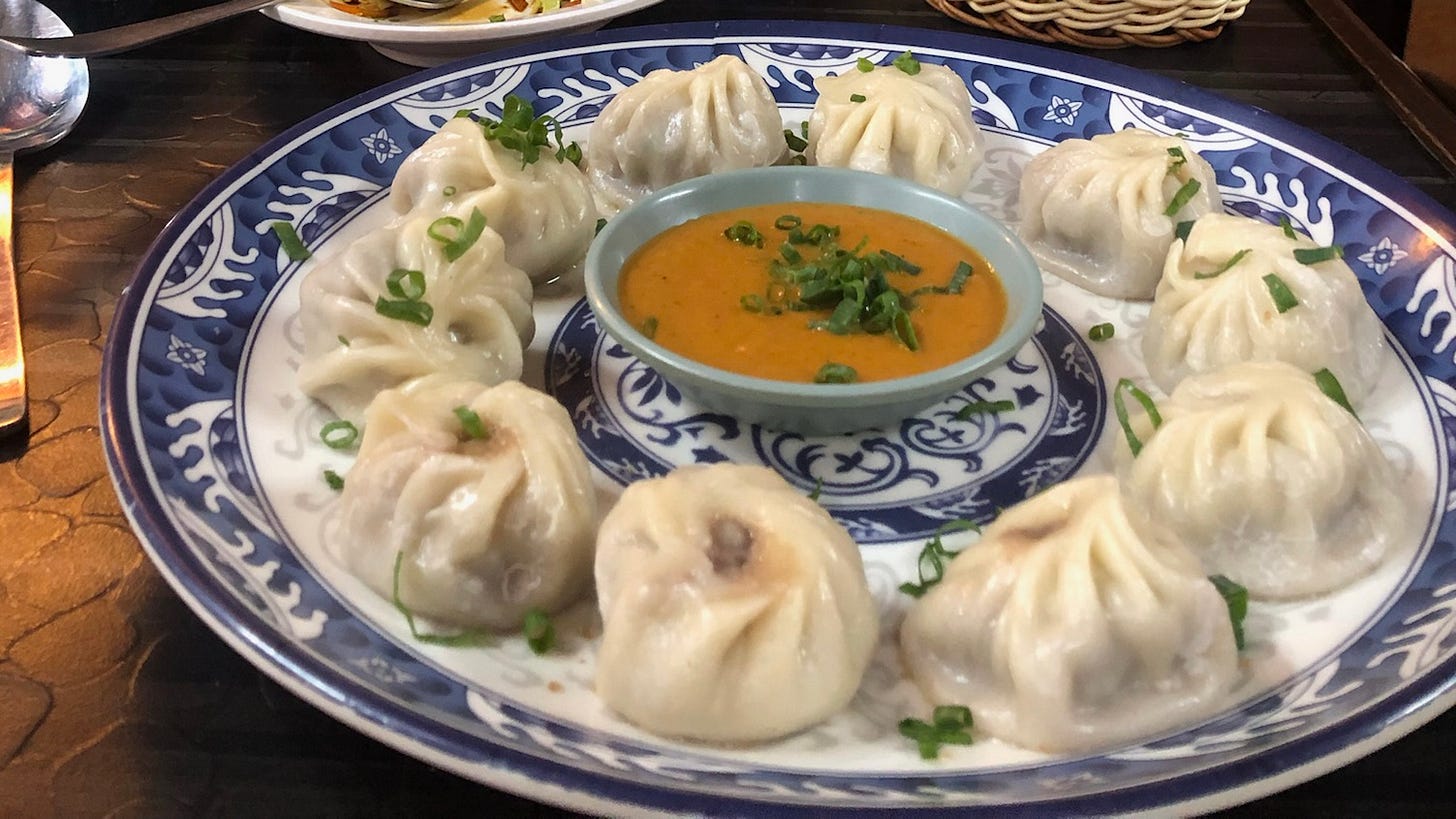
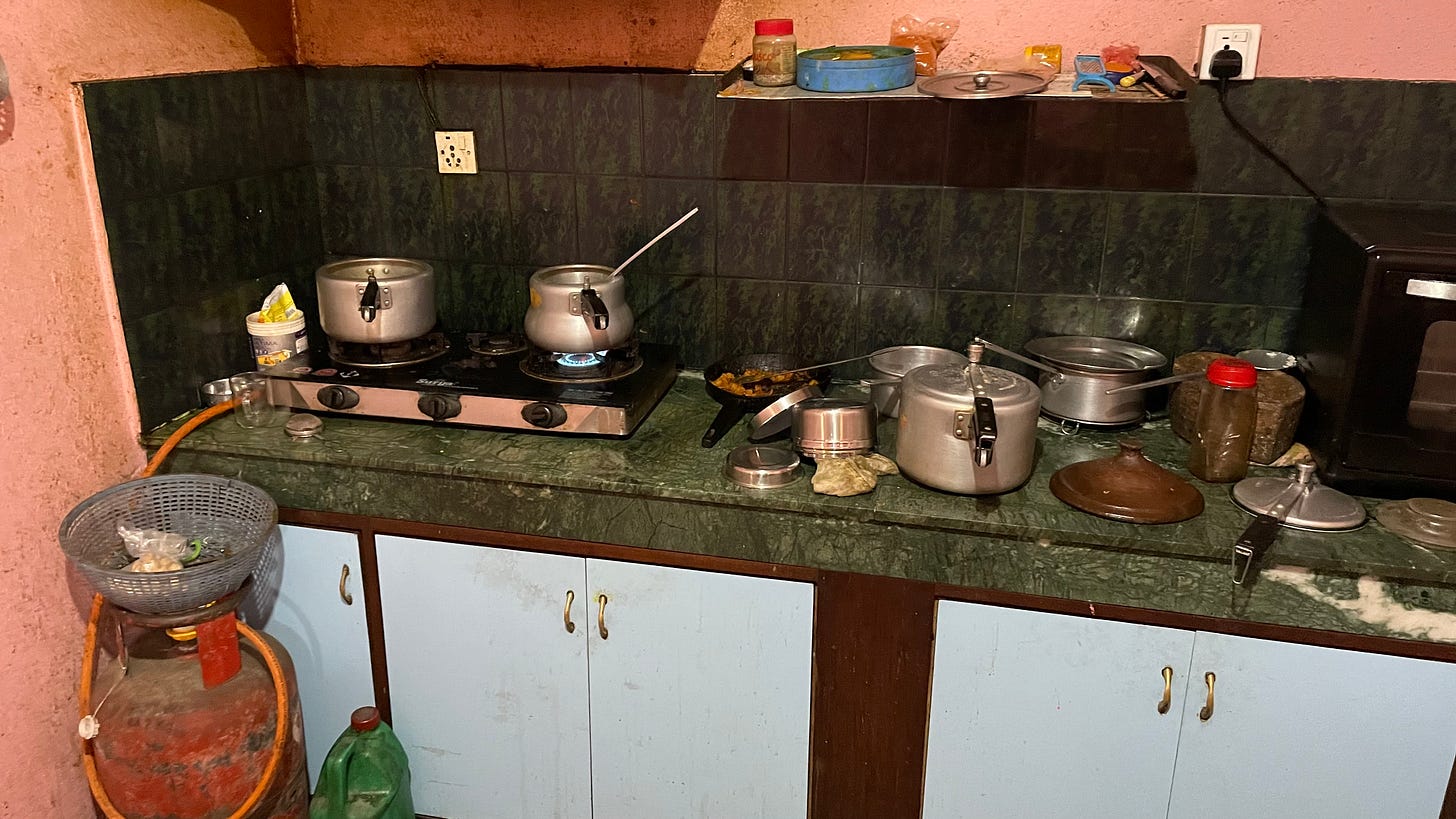
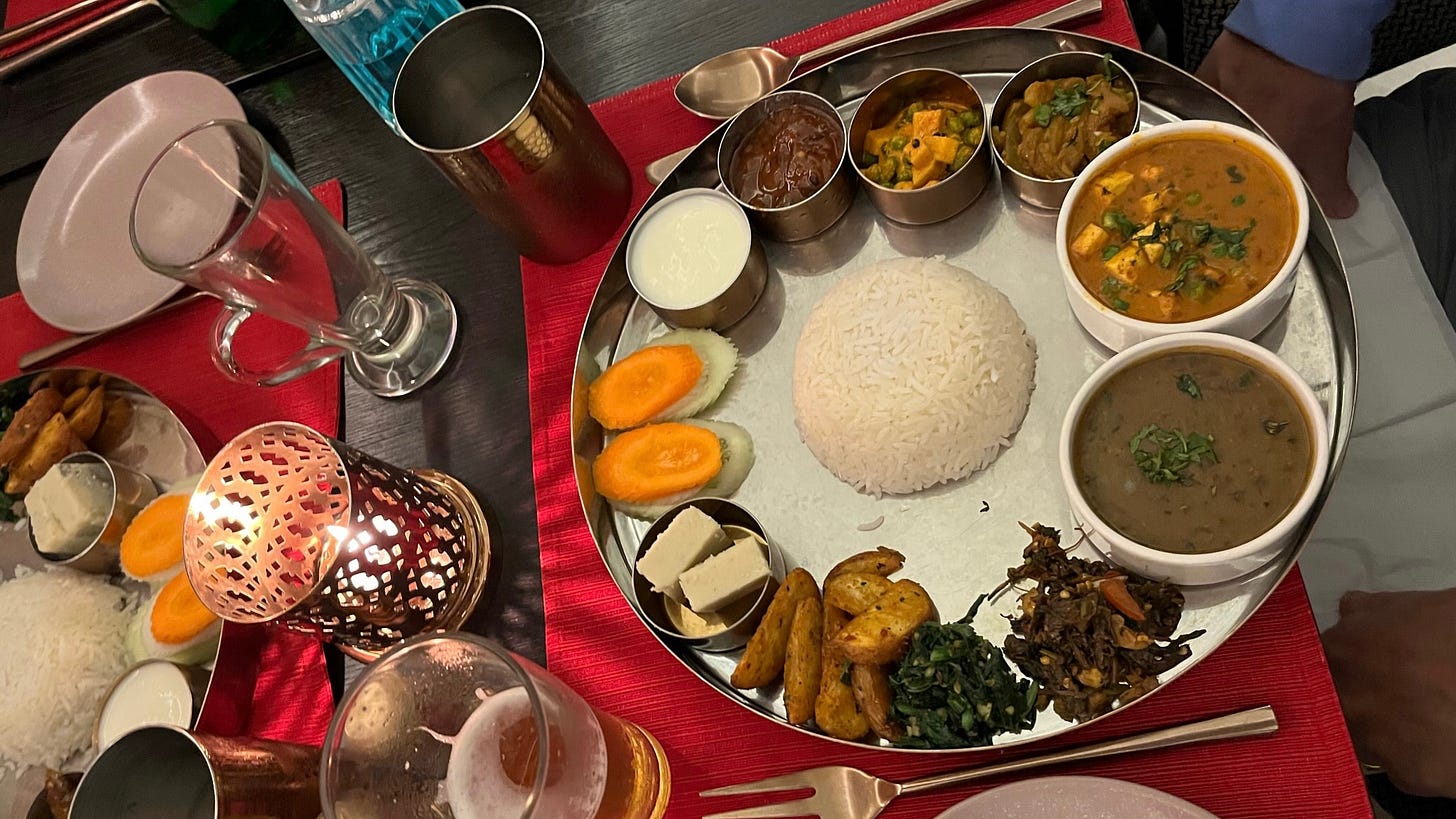
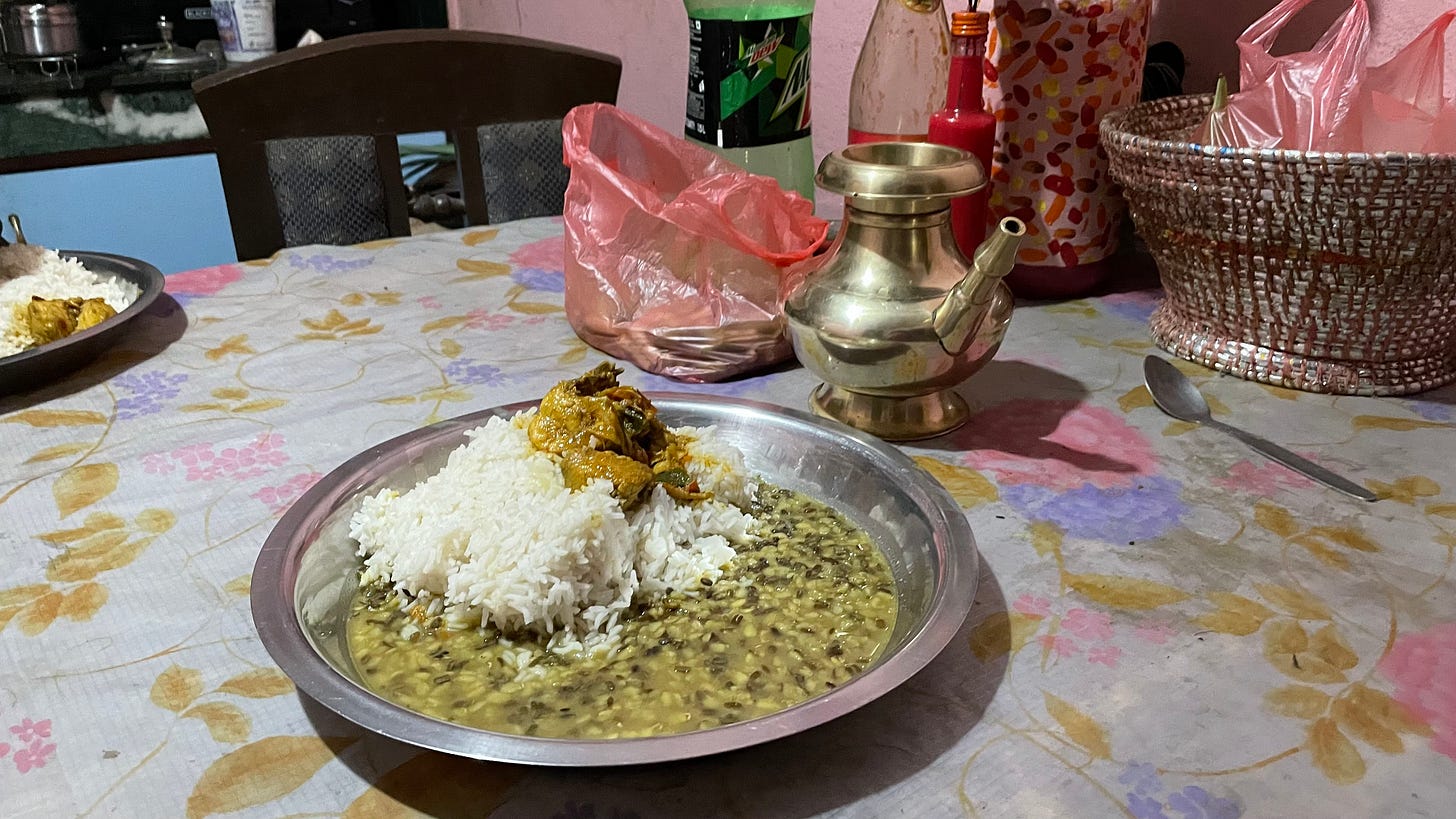
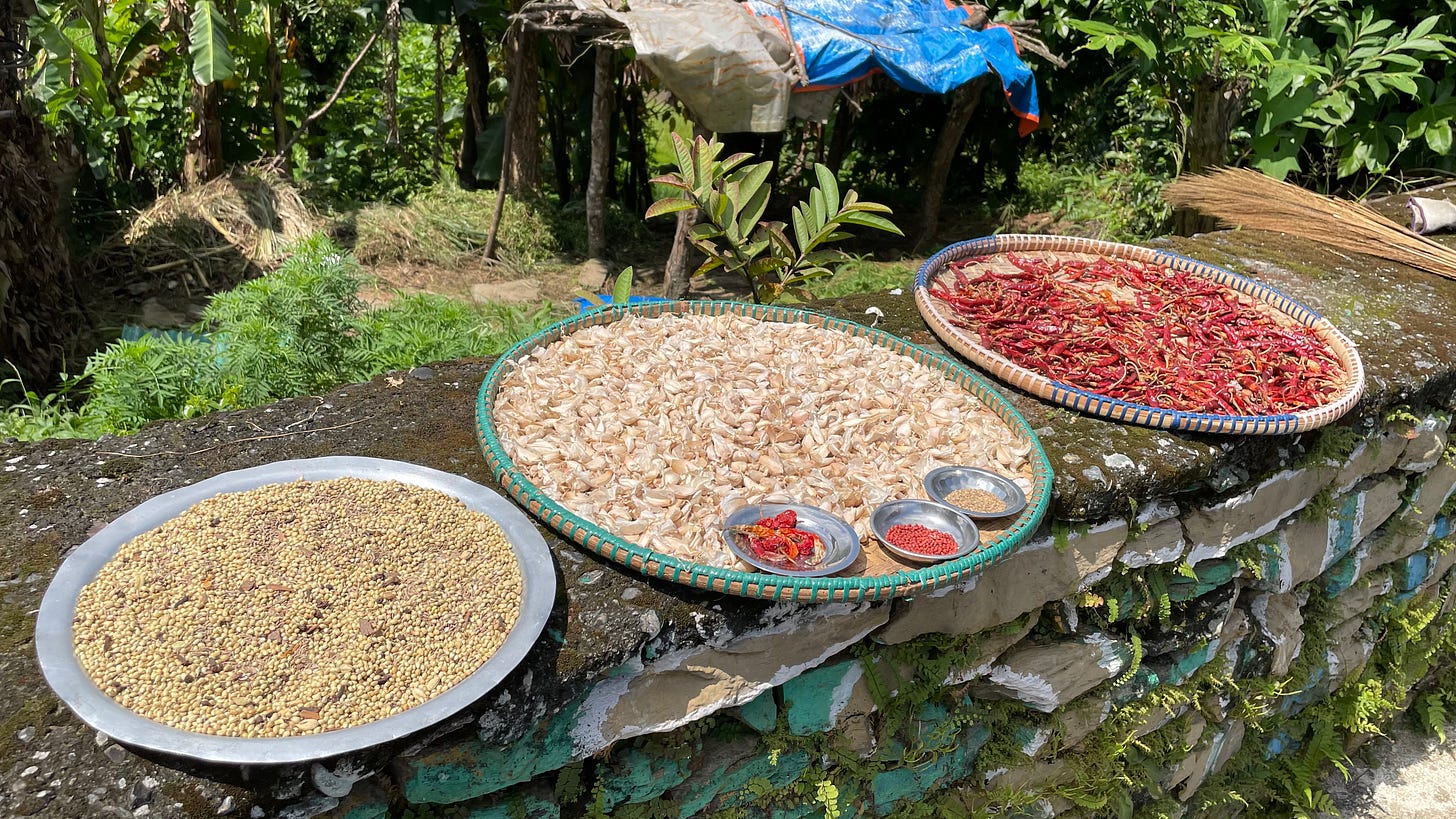
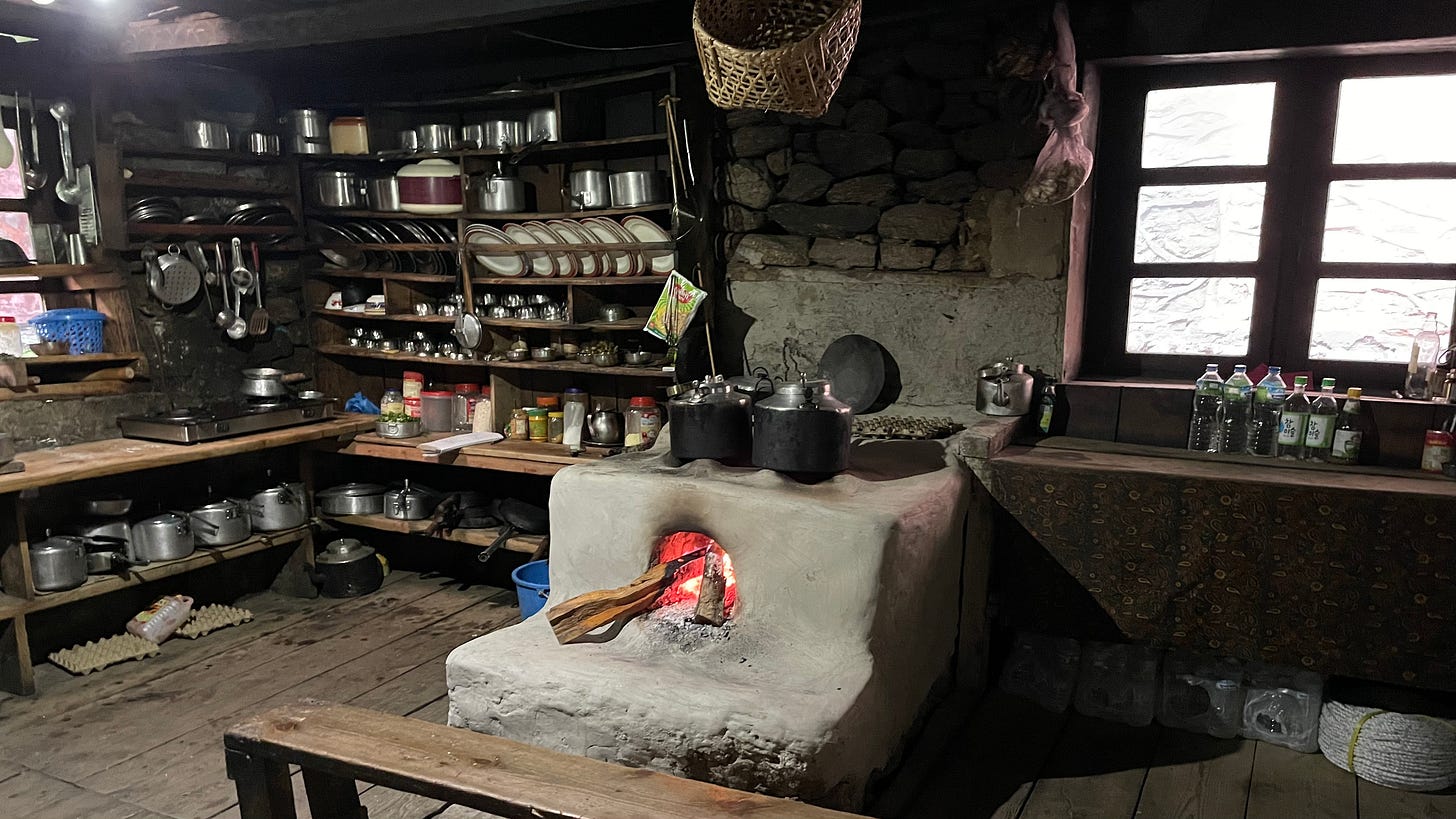
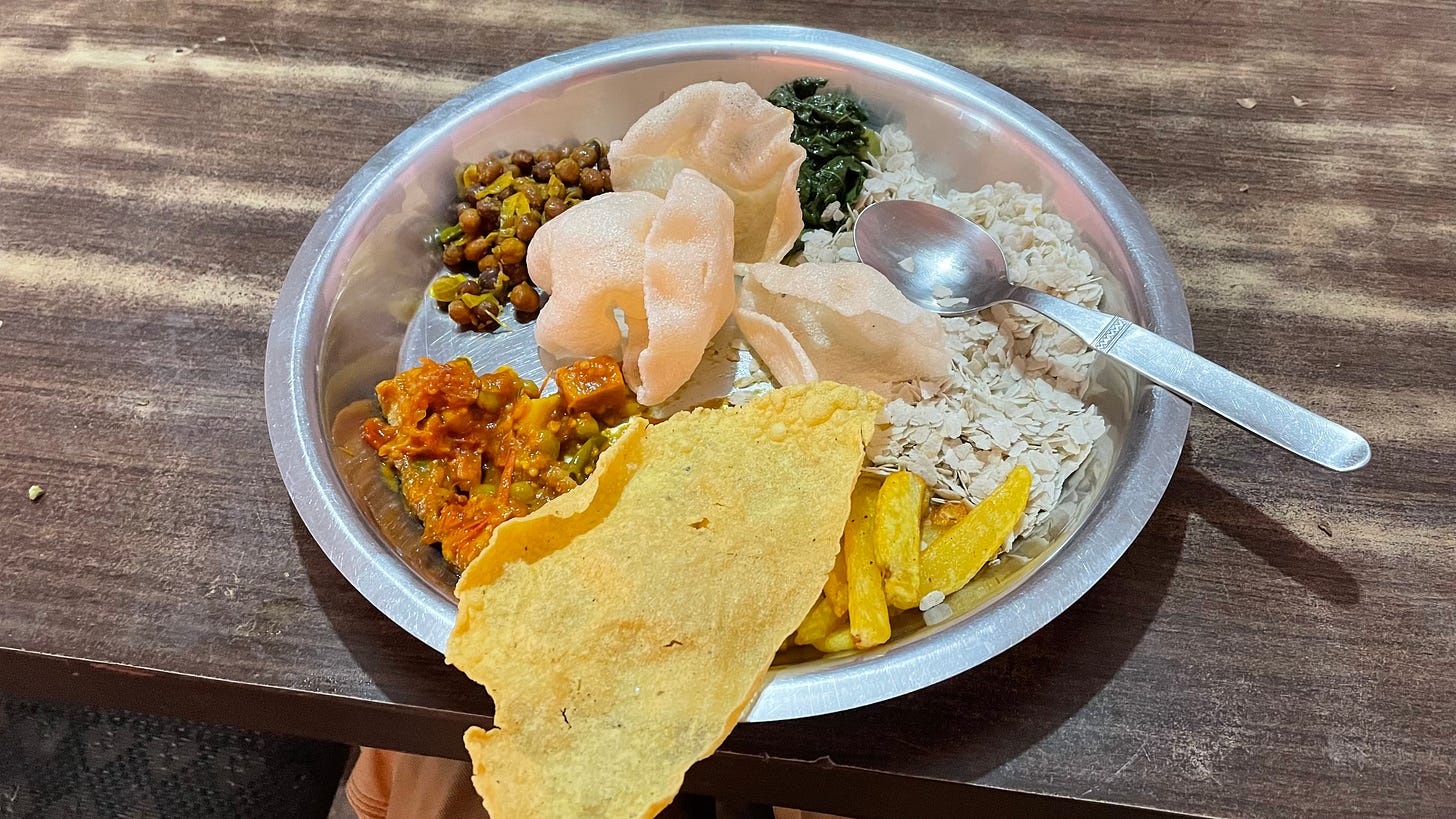
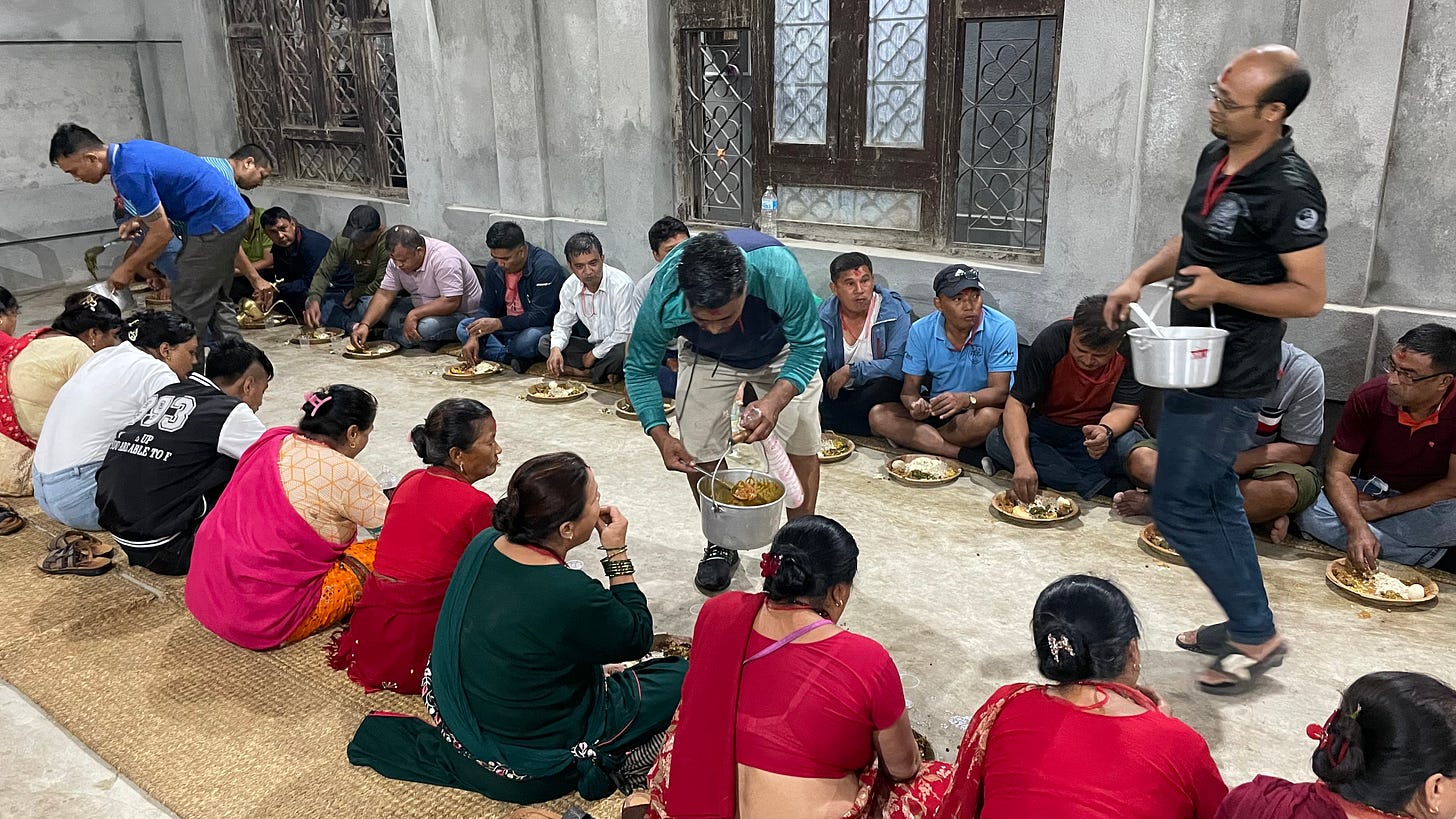
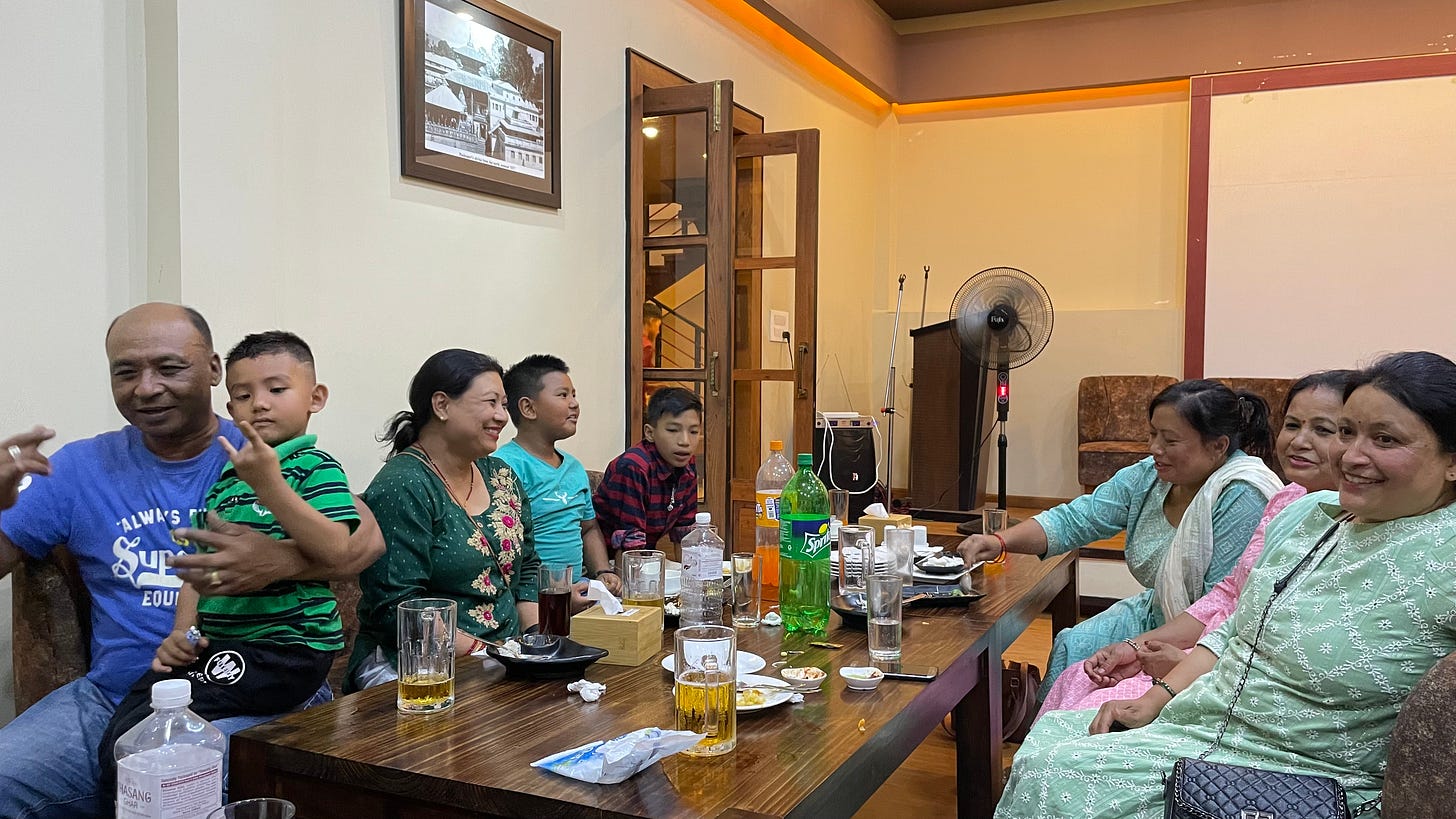
This is such a fun read Oren! You’ve given such a full picture of what it’s like there. From ‘New Shirt’ (an older blog post) to being considered malnourished, you are really feeling the culture! Xoxox Momo (or Mom) 😉
Guys only want one thing and it’s f***ing disgusting (buff momo)